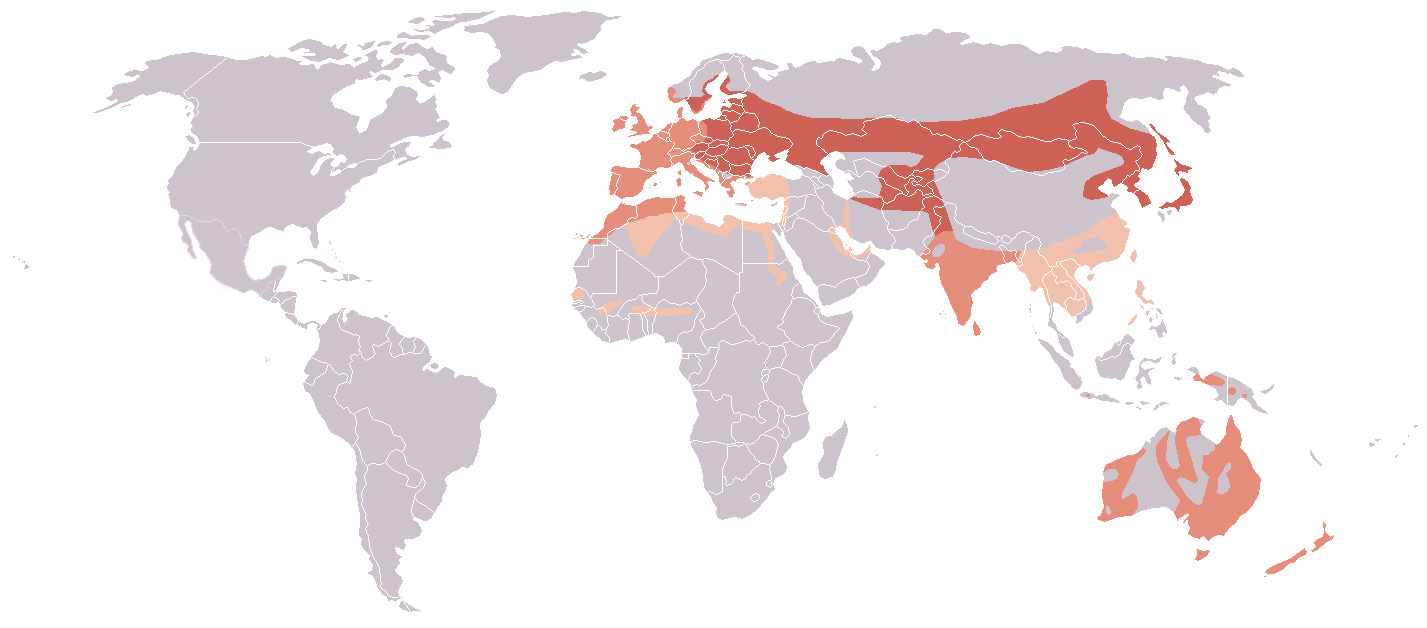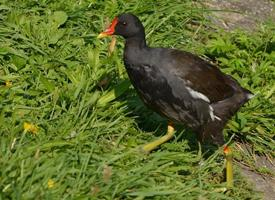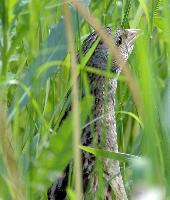
Poids et mesures
| Longueur | de 37 à 42 cm |
|---|---|
| Poids | de 0,6 à 1,2 kg |
| Envergure des ailes | 70 cm |
Données biologiques
| Durée de vie | 15 r |
|---|
Description de l'animal
The Eurasian coot, scientifically known as Fulica atra, is a fascinating and widely distributed bird species belonging to the family Rallidae. This bird is known for its distinctive appearance and behavior, making it a subject of interest among birdwatchers and ornithologists alike.Physical Description:
The Eurasian coot is a medium-sized bird, typically measuring between 32 to 42 centimeters in length and weighing around 585 to 1,100 grams. One of its most striking features is its all-black plumage, which contrasts sharply with its white facial shield and bill. The plumage may appear slightly slate-grey in certain lighting conditions. The legs and feet are strong and lobed, adapted for an aquatic lifestyle, with a greenish or greyish hue. Both males and females share a similar appearance, making it difficult to distinguish between the sexes based on plumage alone. Juveniles, however, can be identified by their paler, greyish plumage and lack of the prominent white facial shield seen in adults.
Habitat and Distribution:
The Eurasian coot has a broad geographical range, spanning across Europe, Asia, Australia, and parts of Africa. Its habitat is predominantly freshwater environments such as lakes, ponds, rivers, and marshes. The coot shows a preference for bodies of water with abundant aquatic vegetation, which provides both food and cover. During the winter months, coots in colder regions migrate to warmer areas, often gathering in large flocks on open waters.
Behavior and Diet:
Eurasian coots are known for their aggressive behavior, especially during the breeding season. They are territorial birds and will vigorously defend their nesting area from intruders, including other coots. Their diet is omnivorous, consisting mainly of aquatic plants, seeds, and small invertebrates such as insects and larvae. They are adept divers, often submerging completely to forage for food underwater.
Reproduction:
The breeding season of the Eurasian coot varies depending on its geographical location but generally occurs during the spring and summer months. The nest is a substantial structure built from plant material, often floating or anchored in shallow water. The female lays between 5 to 10 eggs, which are incubated by both parents for about 21 to 24 days. The chicks are precocial, meaning they are relatively mature and mobile from the moment of hatching. They are cared for by both parents and are taught to swim and forage at an early age.
Conservation Status:
Currently, the Eurasian coot is classified as Least Concern by the International Union for Conservation of Nature (IUCN), indicating that it does not face any immediate threats of extinction. Its widespread distribution and large population size contribute to this status. However, like many wetland species, it is potentially vulnerable to habitat loss and degradation, pollution, and the impacts of climate change.
In conclusion, the Eurasian coot is a resilient and adaptable bird that plays a significant role in the ecosystem of freshwater habitats. Its unique characteristics and behaviors make it a fascinating subject for study and observation in the natural world.
Carte de répartition

Animaux similaires
Nouvelles photos d'animaux
Top 10 des animaux
- Dolphin gull (Leucophaeus scoresbii)
- Japanese macaque (Macaca fuscata)
- Stone loach (Barbatula barbatula)
- Greek tortoise (Testudo graeca)
- Russian tortoise (Testudo horsfieldii)
- Galápagos tortoise (Geochelone nigra complex)
- Diana monkey (Cercopithecus diana)
- Moustached guenon (Cercopithecus cephus)
- Common flying dragon (Draco volans)
- Galápagos penguin (Spheniscus mendiculus)


